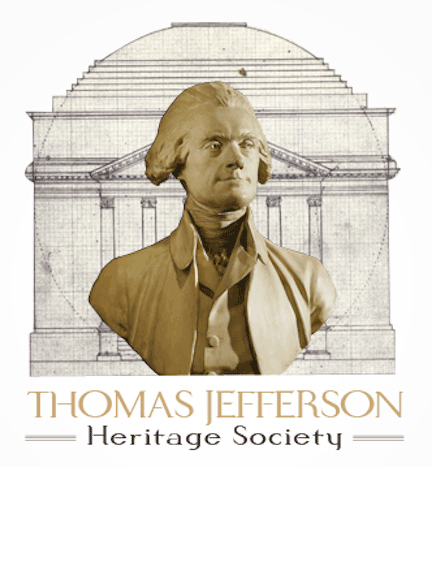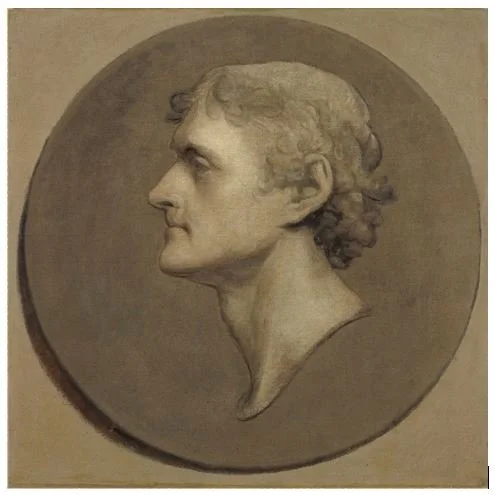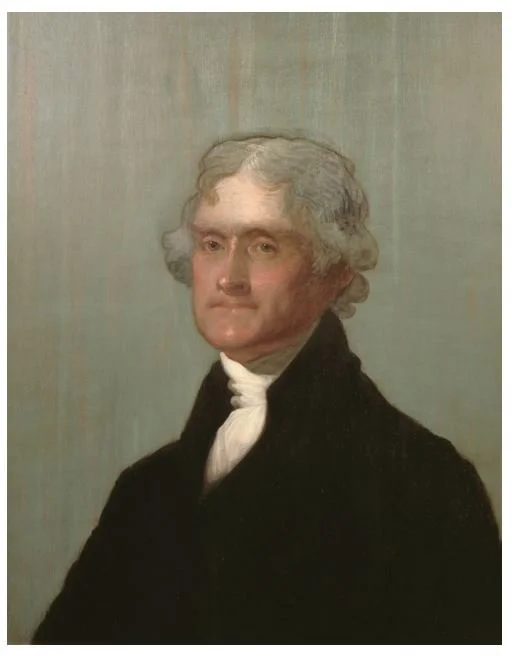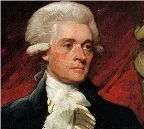Jefferson Information
CHRONOLOGY OF THOMAS JEFFERSON AND THE NEW NATION
Thomas Jefferson was the voice of the unique republic that broke away from the British Empire. Events in his personal life, his political writings, and his singular contributions to the birth of the new nation are chronicled in this Chronology of Thomas Jefferson and the New Nation.
Thomas Jefferson’s Service in the Revolutionay War
In 1770, at the age of 27, the Governor of Virginia appointed Thomas Jefferson as the county lieutenant, with the rank of colonel, of the Albemarle County Militia. Colonel Jefferson was responsible for all militia affairs in the county, including ensuring that the county militia drilled on a regular basis, that the regimental and company muster rolls were kept up, and that militia fines were collected by the sheriff. Jefferson also presided over court martials and councils of war.
With the start of the Revolutionary War, Colonel Jefferson's military duties increased. He reported directly to the governor in preparing the county militia for mobilization. Jefferson was also responsible for providing militia soldiers as replacements for the Virginia regiments of the Continental Army. As commander-in-chief of the Virginia militia, he mobilized the militia to reinforce the Continental Army in the Southern campaign, which ended in victory at Yorktown on October 19, 1781.
He also found the time to represent Virginia at the Continental Congress, which adopted the Declaration of Independence on July 4, 1776, written almost entirely by Jefferson. Elected governor in 1779, Jefferson resigned his militia commission. Jefferson later served as Minister to France, Secretary of State, and Vice President. An architect, scholar, statesman, and citizen-soldier, Thomas Jefferson became the third president of the United States in 1801, serving two terms until 1809.
Thomas Jefferson and his Philosophical Legacy
Few scholars have studied Thomas Jefferson (1743–1826) as a philosopher, perhaps because he never wrote a formal philosophical treatise. Yet Jefferson was a prodigious writer, who left behind a rich philosophical legacy in his declarations, presidential messages and addresses, public papers, numerous bills, letters to philosophically minded correspondents, and his only book, Notes on the State of Virginia. M. Andrew Holowchak has created another area of Jefferson scholarship in his article Thomas Jefferson, published in the Stanford Encyclopedia of Philosophy.
Father of the University of Virginia
The last great endeavor of Jefferson's life was the founding of the University of Virginia. He was 65 years old, but undertook the design and construction of a new University. He established the disciplines, planned the curriculum, and hired the instructors. In this essay, Richard Dixon, editor of Jefferson Notes, chronicles the events that led Jefferson to claim on his tombstone that he was Father of the University of Virginia.
Jefferson and the Act to Establish Religious Freedom
More than 200 years after the Virginia legislature adopted the Act to Establish Religious Freedom, and its influence on the U.S. Constitution, America and the world remains challenged by the tension between church and state. RichardDixon, editor of Jefferson Notes, traces the authorship of Thomas Jefferson and the contributions of George Mason and James Madison in the essay Jefferson and the Act to Establish Religious Freedom.
Jefferson and the Declaration of Independence
Jefferson wanted his authorship of the Declaration of Independence engraved on his tombstone. In the early days of the American Revolution, his contribution was not widely known. Richard Dixon, editor of Jefferson Notes, sets the stage for the emergence of this great document of individual freedom from the pen of Jefferson in the essay Jefferson and the Declaration of Independence.
Jefferson Unbound
When conservators disassembled the manuscript of Thomas Jefferson's only book, Notes on the State of Virginia, they uncovered new clues to the evolution of his thinking.
Click here for original document
The Will of Thomas Jefferson
Thomas Jefferson executed his last will and testament on March 16, 1826, revoking "all former wills by me." There may have been a former will, but its provisions are not known. The next day, Jefferson executed a codicil to his will in which he manumitted Burwell Colbert, John Hemings, Joe Fosset, and the sons of Sally Hemings, Madison and Eston Hemings. This typescript of the will of Thomas Jefferson is from The Jefferson-Hemings Myth: An American Travesty.
Jefferson and Slavery
No area of Thomas Jefferson's life has aroused more controversy than his views and actions on slavery. Richard Dixon, Editor of Jefferson's Notes, traces the evolution of Jefferson's thought in the article Jefferson and Slavery.
MARTHA WAYLES JEFFERSON, WIFE OF THOMAS JEFFERSON
Martha Wayles Jefferson, Thomas Jefferson’s wife, was very skillful in welcoming and dealing with her husband's steady stream of frequent prominent visitors at Monticello. Martha also provided substantial business assistance to her husband in running Monticello. She also was talented in music, and Martha and Thomas often played and sang music together. In Jefferson’s memoir he referred to their 10 year marriage as “unchequered happiness”. Apparently, he never brought himself to record their life together. After Martha’s death the couple's letters to one another were said to be burned by Jefferson. Jefferson also rarely spoke of her publicly, so Martha remains somewhat of an enigmatic figure. In this article, John Works pieces together Martha’s interesting life and her significant contributions to Jefferson’s greatness.
Dialogue between my Head and my Heart
Although we do not know the extent of the physical relationship between Thomas Jefferson and Maria Cosway, it seems clear that he was greatly infatuated with her. The relationship only lasted for about nine weeks when she returned to England. Over several days after her departure, Jefferson penned the famous love letter to her which has become known as the head and the heart letter. They were never to meet again.
World of Thomas Jefferson
Jefferson's life is framed by the Declaration of Independence and his founding of the University of Virginia, but it was played out against the sweep of political and social upheaval throughout the world. Richard Dixon, Editor of Jefferson Notes, presents in Part One and Part Two, a chronology of Jefferson's world.
Jefferson Resolution by Virginia General Assembly
On 13 April 2009, a joint resolution by the Senate and House of Delegates of the Virginia General Assembly was presented to W. McKenzie Wallenborn, President of the Thomas Jefferson Heritage Society, by Senator John Watkins.
Law and Thomas Jefferson
The talents of Thomas Jefferson reached into so many fields it is easy to overlook that he was educated as a lawyer and that was the activity of his early years. Richard E. Dixon examines Jefferson's eight years as a lawyer in the article Law and Thomas Jefferson.
Jefferson and Medicine
Thomas Jefferson, truly a man for all seasons, was deeply involved in medicine. How he found time for this interest is truly amazing considering that he spent over 35 years in service to our young country, and put much effort into his many other fields of expertise, which included architecture, scientific farming, botany, archeology, paleontology, and astronomy, to name but a few. Thomas Jefferson and the Medicine of His Day by White McKenzie Wallenborn, M.D., was published in the Medical Alumni News, University of Virginia, Spring 2002, Volume 1.
Jefferson and Poetry
"I was at the Jefferson Memorial Library in Monticello to write a book about Thomas Jefferson's interest in Romantic poetry, but I had little to go on. The library was daunting, filled with volumes on Jefferson and gardening, Jefferson and architecture, everything, it seemed, but Jefferson and poetry." When Jefferson Dined Alone, by Jonathan Gross. Mr. Gross is a professor at DePaul University and author of the forthcoming, Thomas Jefferson's Scrapbooks (Steerforth Press, May 2006).
Jefferson and Architecture: The University of Virginia
"Among the many groups which look to Jefferson as the model of their purpose and embodiment of their ideals, American architects especially can attribute the roots of their profession to the "Sage of Monticello." Although never formally trained in architecture, Jefferson had studied the structures of Europe and read extensively on the great architects of Europe. Possessed by a penchant for masterpieces in a community he would establish as the ideal American village: The University of Virginia."
Jefferson and the Politics of Architecture, by Joshua Johns.
Thomas Jefferson standing, etching by Eliphalet Andrews, 1901
Thomas Jefferson in bronze
by Jean Pierre David d'Angers 1834
Rotunda U.S. Capitol
Jefferson portrait at West Point
by Thomas Sully, 1821-22
Statue honoring Jefferson on the banks of the Seine in Paris, France.
Jefferson by Charles Willson Peale, painted in December 1791 in Philadelphia, now at the National Portrait Gallery
The Medallion Profile, painted in June 1805 in Washington, DC, now at the Fogg Art Museum, Harvard University
The Edgehill Portrait, painted in 1805 by Gilbert Stuart, owned jointly by the National Portrait Gallery and the Thomas Jefferson (Memorial) Foundation
Thomas Jefferson’s Original Graveyard Monument at the University of Missouri
The history and current location of the original monument erected over Jefferson’s gave is very interesting. Jefferson left very detailed instructions for it. Souvenir hunters chipped off small chunks of the granite base of the original obelisk. Congress subsequently approved the erection of a new monument, but it was twice the size of Jefferson’s original design. When the new monument was built, Jefferson’s grandchildren received many requests for the old one, including from the University of Missouri, which was within the vast region of the Louisiana Purchase. The obelisk currently is contained in an area called “The Jefferson Memorial Garden” in the university’s Francis Quadrangle.
Thomas Jefferson’s Original Graveyard Monument at the University of Missouri, by John Hamilton Works Jr












